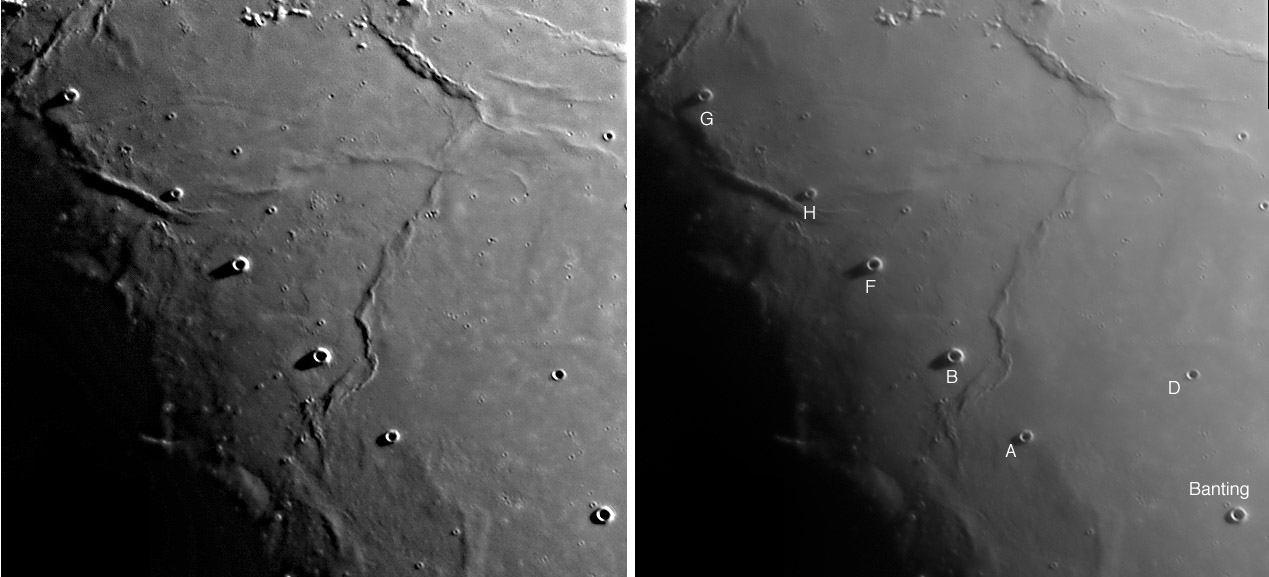image by Martin Fiedler. Right image original; left, drastically enhanced by CA Wood
Linne is one of the most famous craters on the Moon and the area has been imaged by Lunar Orbiter IV and Apollo Metric Camera , but Martin’s very low Sun image shows features invisible on both. The area west of the line of craters from Linne G to Linne A is full of subtle ridges and odd depressions. Most strange are the curved parallel troughs to the east of G. These look like wheeled vehicle tracks, but are - I suppose - more prosaically some sort of volcanic channel, or are they processing artifacts? Between Linne F and B is a very low, flat area casting a shadow - is this the margin and surface of a lava flow? East of H and F is a cluster of little hills, and immediately to their east (right) two small rimless pits. The Apollo Metric Camera image shows a lot of secondary crater clusters on this part of Mare Serenitatis, but I think these are hills, not little secondary craters. But I don’t know what the hills are, and assume they are volcanic because of their nearness to the rimless pits. Maybe someday a SMART-1 image will be released to explain this. I can’t find Linne on this image - its is probably just off the bottom left terminator, in shadow. The mare ridges show up quite well in this image, but most other images I’ve seen don’t depict them well. Perhaps that is why none are named, although many others are in Serenitatis. Other ridges in this mare are named for naturalists - how about some additional suggested naturalist names for these ridges? And how about more images like this across every maria!
Technical Details:
26.12.2006. 14″ Maksutov Newtonian + DMK21AF04 s/w (FireWire) camera + RG685 filter; 3% of 7500 Frames added in Giotto 2.06, further processing in Fitswork and Photoshop.
Related Links:
Rükl chart 13
A earlier LPOD view
Yesterday's LPOD: One or Two Craters?
Tomorrow's LPOD: A Lunoid and Lava
COMMENTS?
Register, Log in, and join in the comments.




